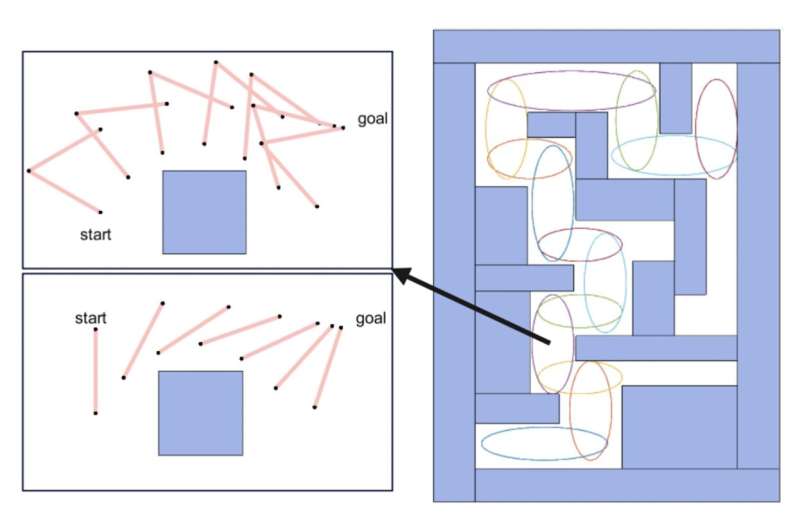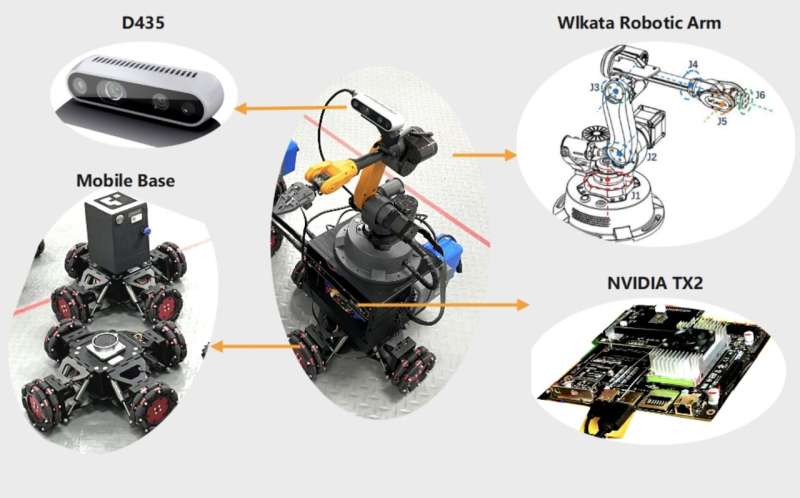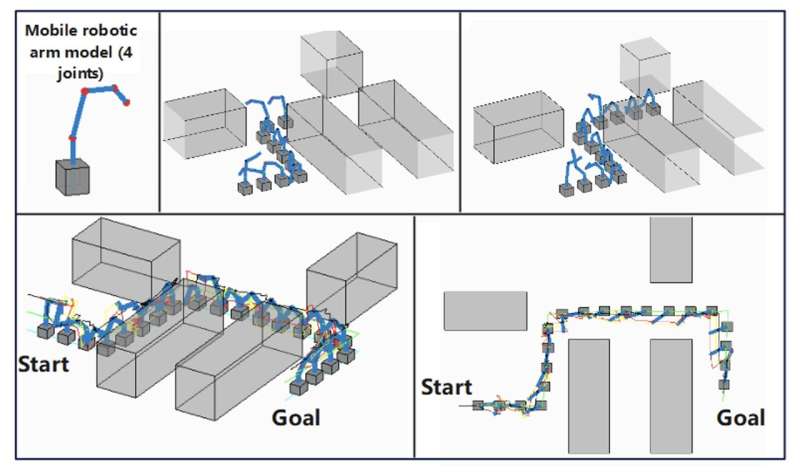May 17, 2022 feature
A new approach for safer control of mobile robotic arms

Researchers at Shanghai Jiao Tong University, University of Oxford, and the Tencent Robotics X Lab have recently introduced a configuration-aware policy for safely controlling mobile robotic arms. This policy, introduced in a paper pre-published on arXiv, can help to better guide the movements of a robotic arm, while also reducing the risk that it will collide with objects and other obstacles in its vicinity.
"The preparatory work of this paper includes the completed vision-based grasping work of the mobile manipulator and the obstacle avoidance work realized by modeling the mobile manipulator in the simulation," Fan Ding, one of the researchers who carried out the study, told TechXplore. "The main goal of this paper is to use the constructed mobile manipulator system to verify our proposed safety control theory."
The new law introduced by Ding and his colleagues is designed to drive a mobile robotic arm towards a desired region in space, while preventing it from colliding with nearby objects or obstacles. The team specifically created this law with the hope that it could improve the performance and safety of robots operating in obstacle-clustered environments.
In contrast with other methods and policies introduced in the past, the approach outlined in the recent paper also describes the spatial structure of the mobile robotic arm. This ultimately allowed the researchers to prevent collisions with nearby objects more efficiently.

"The configuration-aware part in this paper achieves the task of grasping objects, while for the task of obstacle avoidance, we set this part as prior knowledge and do not explore it," Ding explained. "The safety control of the mobile manipulator is realized by the real-time safety control law, which is obtained by solving a quadratic program containing a finite number of control barrier function constraints, which incorporate the spatial structure of the mobile manipulator. The overall computational efficiency of a robotic arm controller will not be greatly reduced with increasing complexity of the spatial structure."
So far, Ding and his colleagues evaluated their approach in a series of numerical simulations. Their findings were very promising, suggesting that their new policy could help to increase the safety and efficiency of the mobile robotic arm they applied it to.
"The most notable achievement is to propose an online mobile manipulator obstacle avoidance method, which considers the spatial structure of the mobile manipulator and scales well with dimensions," Ding said. "Its possible impact is to propose a feasible solution for high-degree-of-freedom mobile robots to efficiently avoid obstacles."

In the future, the researchers hope to implement and evaluate their approach in real, physical robotic arms, to further confirm its effectiveness. In addition, their work might inspire the development of similar approaches to reduce the risks of robots colliding with obstacles in their surroundings.
"In the future, the configuration-aware part will be applied to the obstacle avoidance of the mobile manipulator, instead of using the environment as a priori knowledge," Ding added. "In addition, they plan to explore routine planning for mobile base."
More information: Fan Ding et al, Configuration-aware safe control for mobile robotic arm with control barrier functions. arXiv:2204.08265v2 [cs.RO], arxiv.org/abs/2204.08265
© 2022 Science X Network

















